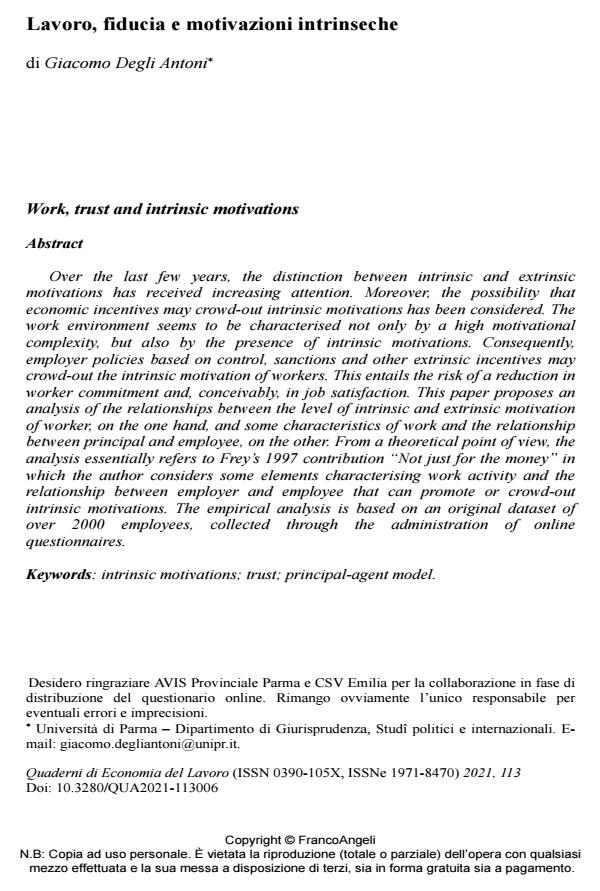Work, trust and intrinsic motivations
Journal title QUADERNI DI ECONOMIA DEL LAVORO
Author/s Giacomo Degli Antoni
Publishing Year 2022 Issue 2021/113
Language Italian Pages 27 P. 117-143 File size 526 KB
DOI 10.3280/QUA2021-113006
DOI is like a bar code for intellectual property: to have more infomation
click here
Below, you can see the article first page
If you want to buy this article in PDF format, you can do it, following the instructions to buy download credits

FrancoAngeli is member of Publishers International Linking Association, Inc (PILA), a not-for-profit association which run the CrossRef service enabling links to and from online scholarly content.
Over the last few years, the distinction between intrinsic and extrinsic motivations has received increasing attention. Moreover, the possibility that economic incentives may crowd-out intrinsic motivations has been considered. The work environment seems to be characterised not only by a high motivational complexity, but also by the presence of intrinsic motivations. Consequently, employer policies based on control, sanctions and other extrinsic incentives may crowd-out the intrinsic motivation of workers. This entails the risk of a reduction in worker commitment and, conceivably, in job satisfaction. This paper proposes an analysis of the relationships between the level of intrinsic and extrinsic motivation of worker, on the one hand, and some characteristics of work and the relationship between principal and employee, on the other. From a theoretical point of view, the analysis essentially refers to Frey’s 1997 contribution "Not just for the money" in which the author considers some elements characterising work activity and the relationship between employer and employee that can promote or crowd-out intrinsic motivations. The empirical analysis is based on an original dataset of over 2000 employees, collected through the administration of online questionnaires.
Keywords: intrinsic motivations; trust; principal-agent model.
Giacomo Degli Antoni, Lavoro, fiducia e motivazioni intrinseche in "QUADERNI DI ECONOMIA DEL LAVORO" 113/2021, pp 117-143, DOI: 10.3280/QUA2021-113006